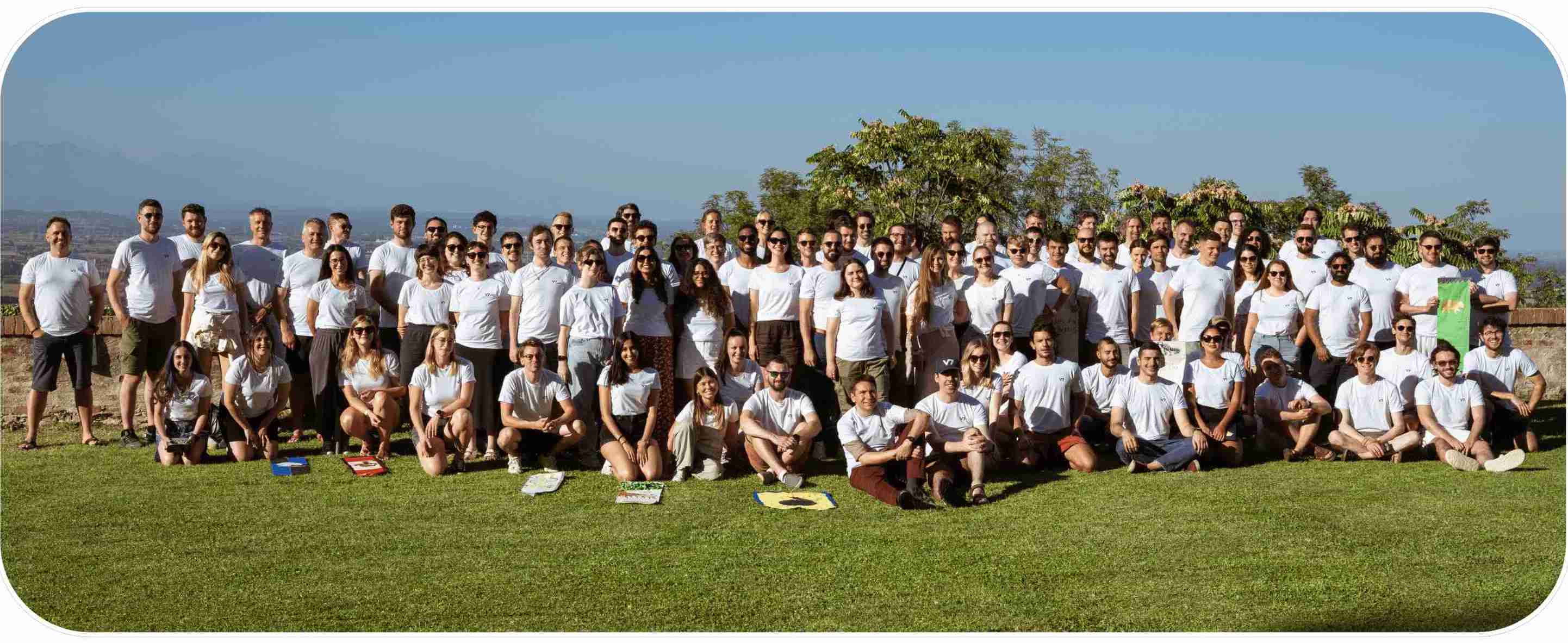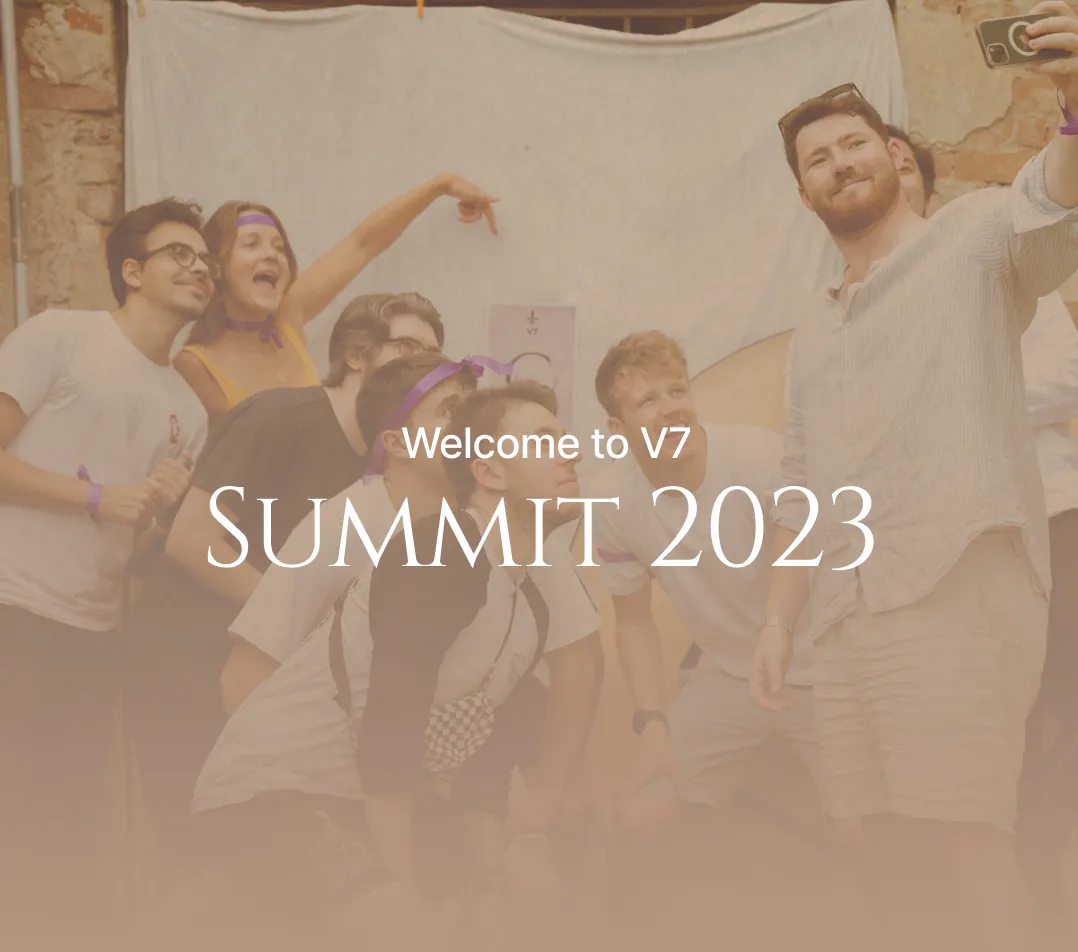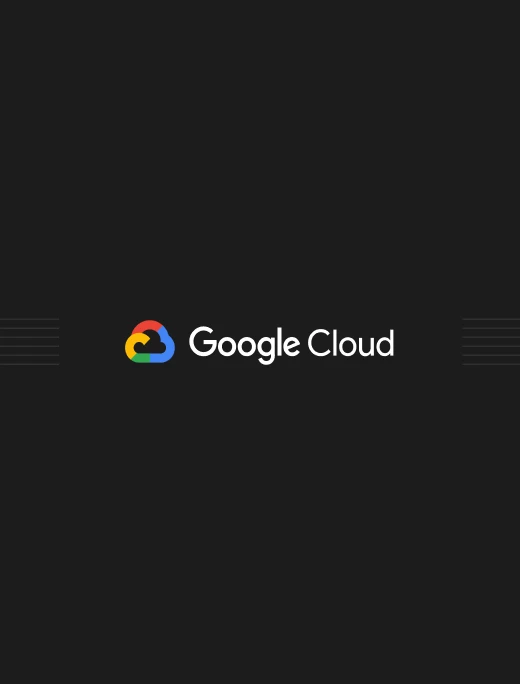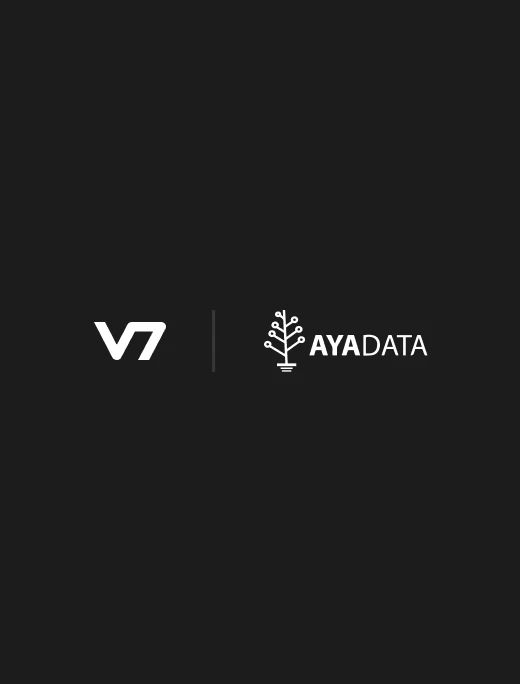Each year, the V7 summit brings team members together from across the globe. We reveal some of our learnings from this year's event - and share things you can do at your own summit. - Alberto Rizzoli, CEO
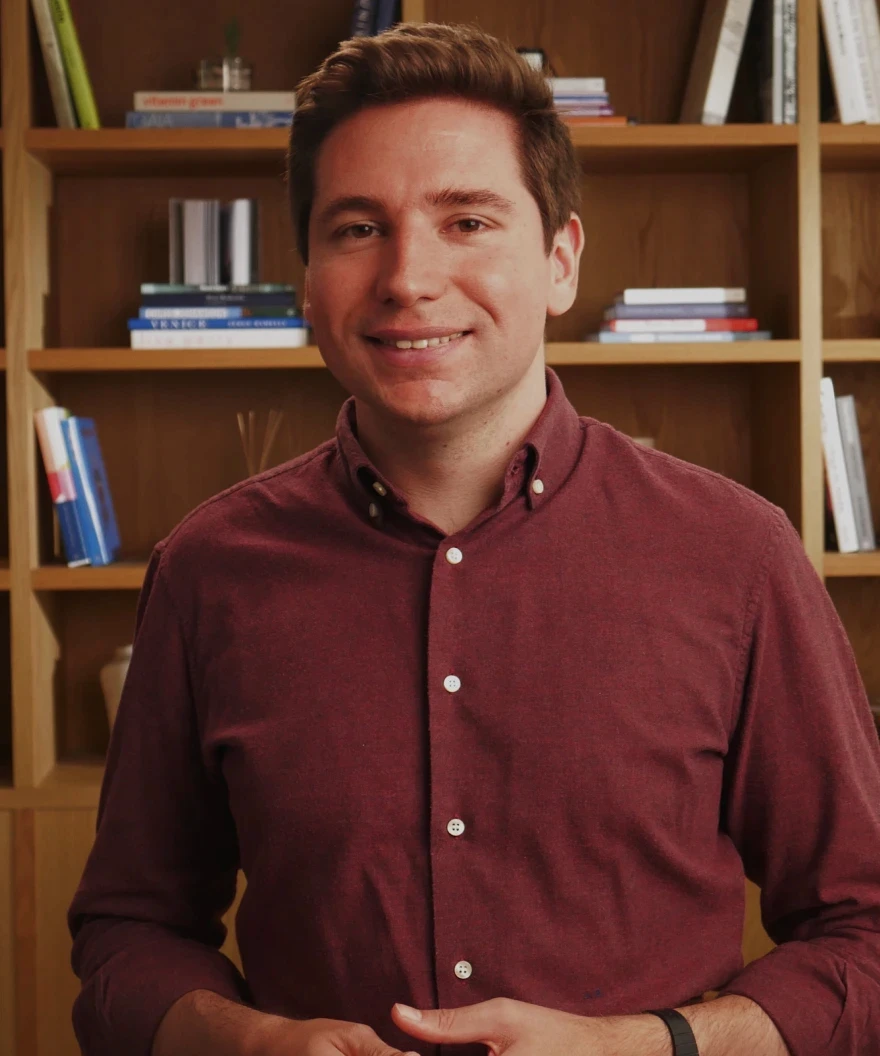
Co-founder & CEO of V7
As a team of over 110 members, with over one in three V7ers living outside the UK, we’re no stranger to collaborating remotely. However, while we’ve excelled as a hybrid company, it’s important to connect face-to-face when scaling our mission to turn human knowledge into trustworthy AI.
To do so, we rely on one of V7’s most cherished traditions - the V7 Summit. This is a chance to take four days to hash out strategy, dive into workshops, and ultimately connect with the people bringing the V7 mission to life.
With this tradition now in its fourth year (!), we’d like to share ten lessons we’ve learned, which you can take into your own company summit.
1. Kick-off by defining the summit’s goals
Summits require a huge investment in time, cost, and energy, quasi-deactivating your company for however number of days they last. Kick-off by defining what the summit is and is not for, and help the team align to the right mindset. In our case, it was a chance to debate strategic decisions, bond with teammates over competitive activities, and cross-collaborate with other teams. It was not a working holiday, and “regular work” was not allowed for most participants.
It’s worth bearing in mind - the summit will be what your employees make of it, so do your part to get them started on the right foot.
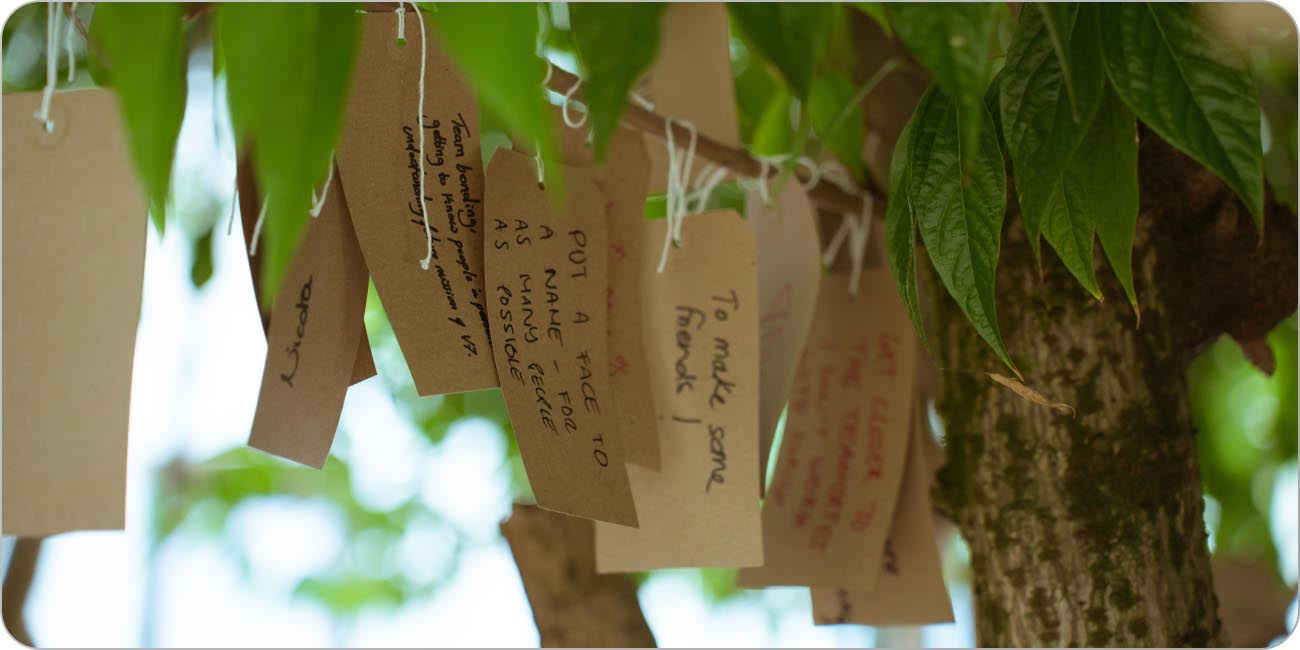
We prepared icebreaker challenges in advance for both the arrival day and day 2, encouraging equal parts curiosity and intimacy from the get-go. Before being given a room key, participants had to complete two tasks: First they’d set an intent of what they’d like to achieve over 3.5 days and hang it on a tree in the main courtyard, then they anonymously wrote down a peculiar fact about themselves - which would be handed to a colleague at random for them to decipher throughout the event. This helped open the lines of communication, where a new joiner could approach a conversation not with “what do you do” but rather “what are your thoughts on paragliding?”.
Next, we made sure to repeat the company mission, (in our case, our mission is to turn customer data into trustworthy AI) and to discuss at length how each team fulfills a part of that mission.

Take the time to think about the goal of your summit, the steps needed to achieve it, and what you might need to do to empower teams to bring you closer to it. In our case, this included preparing objectives and key results for each team and communicating them clearly top-down.
2. Nail the balance between work and fun
It’s important to strike the balance between work and fun, to give your team the space to strategize while having the breathing room to connect on a more human level.
Create a shared team calendar with the activities, and a printed version to place on everyone’s bed alongside any swag or material you may have prepared for the event.
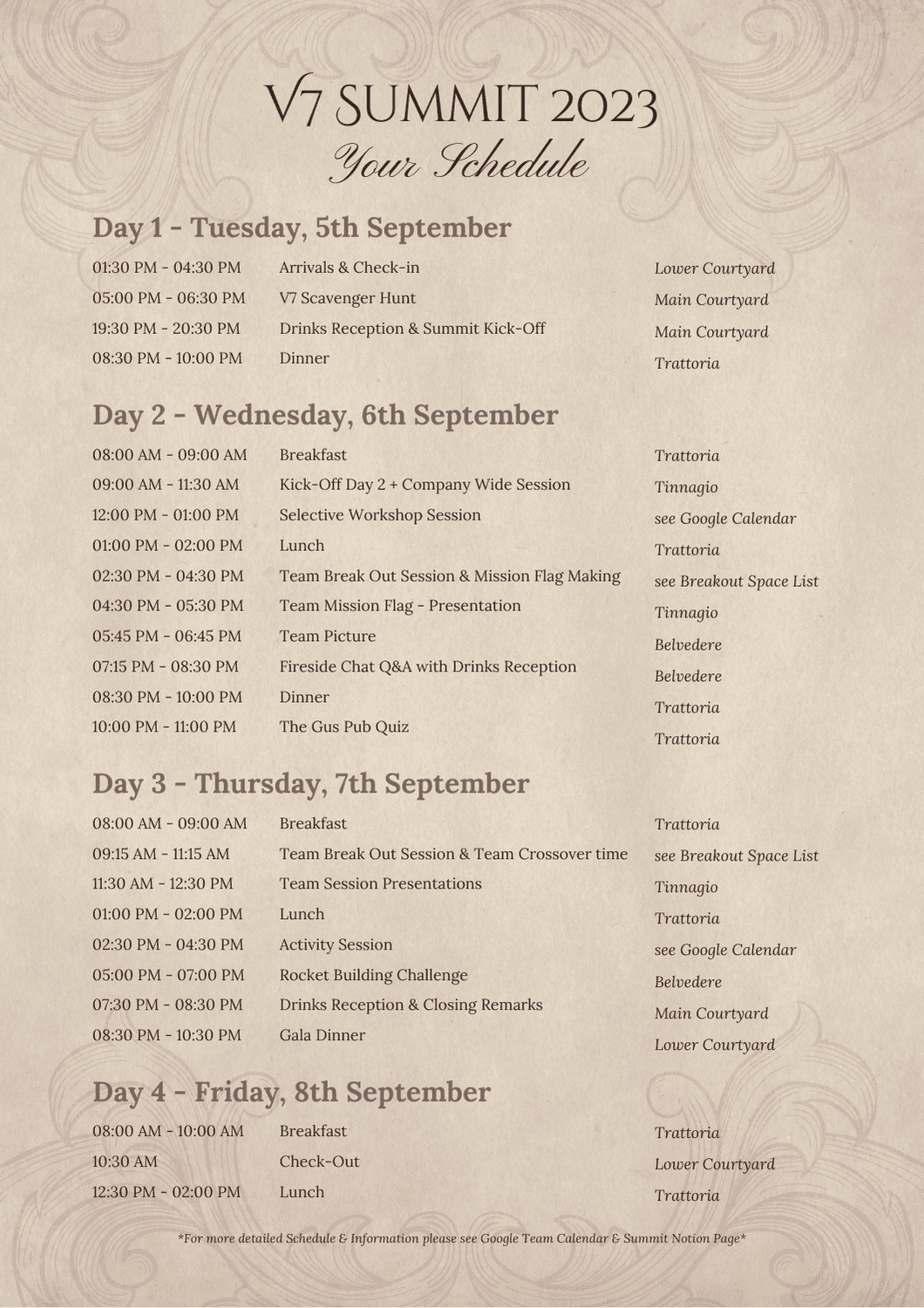
Our schedule made room for breaks, creating a separation between “work” and team bonding. The ideal formula for us was one part fun for every two parts of work, with “business as usual” blocks of 30 minutes in between major events.
Take into consideration the size of your team, and avoid creating too many “company-wide” keynote events as they can encourage passive participation. You want people to step in and act rather than sit and listen.
We had a blend of mandatory events - such as a team mission and crafty flag-building workshop, and optional sessions, including yoga, volleyball, a historical walking tour of the 1761 village, and a hike up the Piedmont hills. Some variety creates accessibility options.
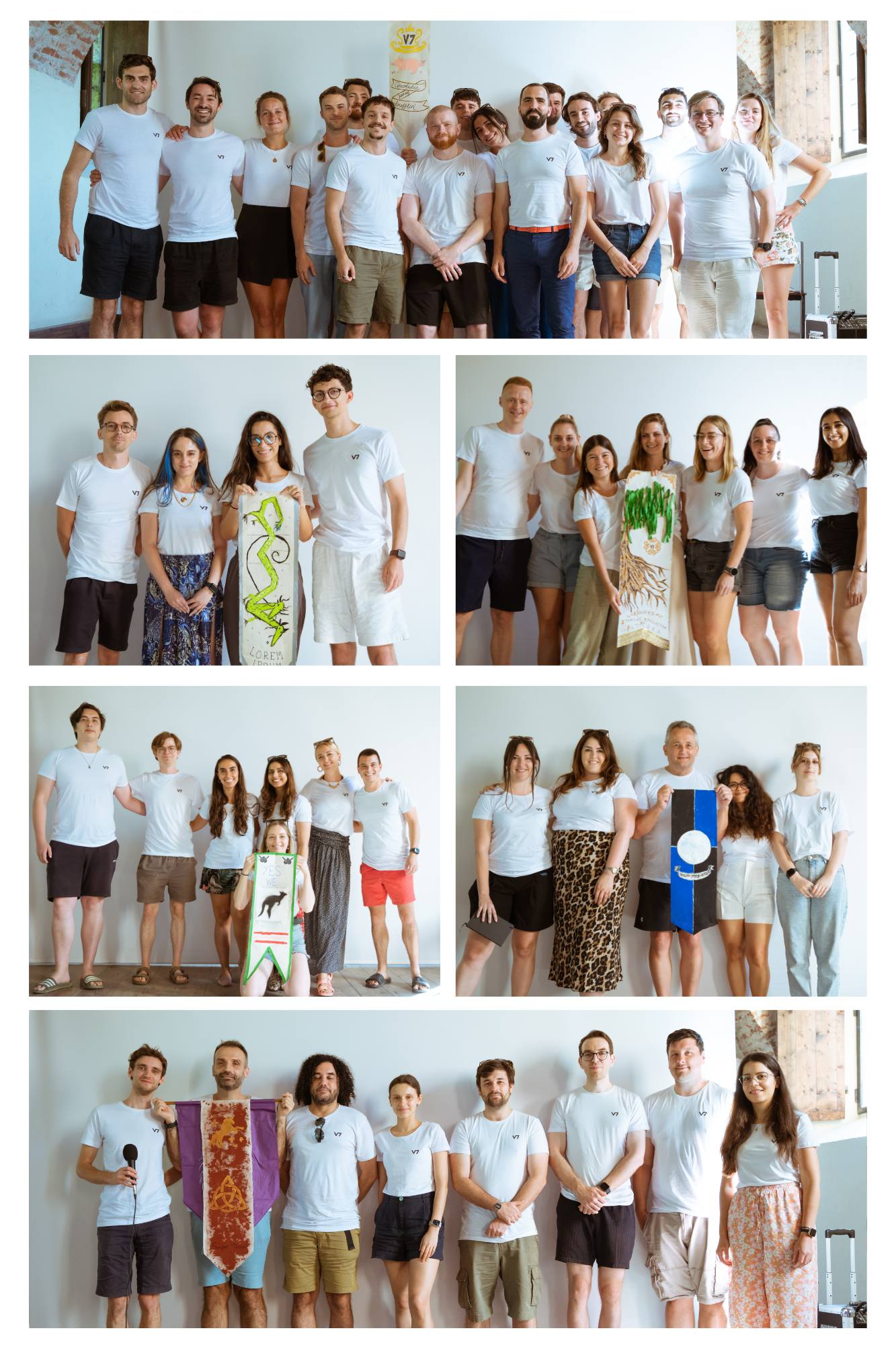
On the “work” side, we were also careful to balance company-wide events, such as a founders’ fireside chat, with team-focused sessions, such as an engineering retrospective. What worked best for us was concentrating team-focused events towards the second half of the event, when the higher-level messaging was set and people are eager to execute in smaller groups and cross-collaborate.
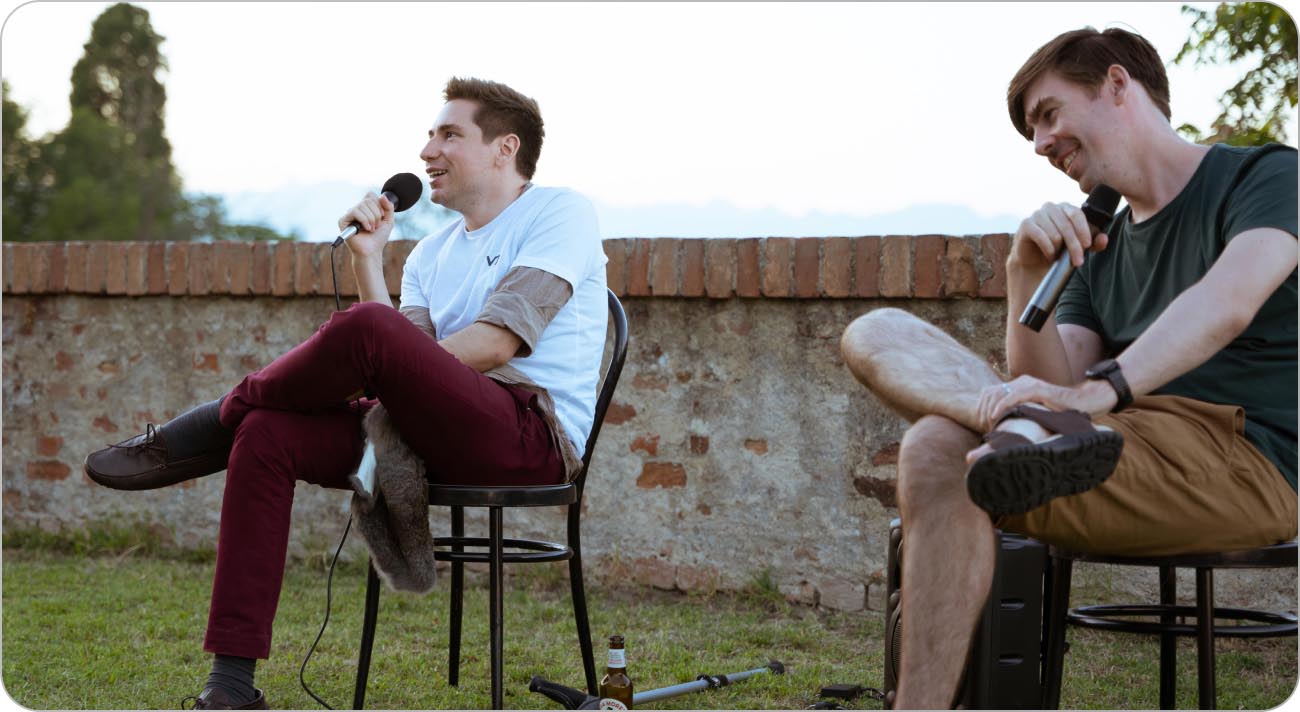
3. Pick a well-equipped, but slightly rustic location over a 5-star corporate-friendly hotel
People join startups because of the challenge, not the comforts. Your summit should reflect that and favor a sense of wonder and play over one of comfort, luxury, and relaxation (unless your startup’s industry is from that world).
In our case, we found a rustic-revamped Italian village in Piemonte, immersed in nature yet with solid WiFi, whiteboards, and collaboration spaces.
It’s also important here to pay close attention to the geographic location of your summit. Here, you’re thinking of travel costs, the simplicity of the journey, and the energy of your team. In our case, we were an hour away from two international airports, with easy access to taxis - which ensured we could accommodate travelers from all over the world while limiting the number of steps needed to get everyone to their final destination.
Similarly, having a fit-for-purpose site will help to foster a sense of community within your team. In our case, we had overnight stays in the same building, on-site catering for perfectly-timed outdoor dining, and entertainment all available within the complex. This, firstly, cut down on the organizational workload but also encouraged team members to make the most of the time together.
Finally, a word from the wise - don’t forget to purchase a portable speaker and multiple Bluetooth mics - they will be one of the most important assets of your summit.
A High-Level Budget for 105 people
$70,000 - Venue and food
$20,000 - Flights and transport
$8,000 - Gala dinner
$5,500 - Coffee, drinks, snacks, and service
$2,500 - Banners, Decoration, & Craft material
$700 - Afternoon Gelato truck
$250 - Each A/V setup
None of these include tax. Most of our activities were self-organized by employees rather than purchased hence why they're not reflected. People tend to care more when an event is the product of their peers rather than a bought experience. Don't be a hero though, outsource situational tasks like A/V setup, meals, meeting room setup to the venue.
4. Set up a scavenger hunt to speedrun the venue tour and break the ice
If you're a hybrid company, or past 40 in scale, it's unlikely that the entirety of your team will be familiar with each other. Add that to the fact they’ve all just arrived at an on-site company summit, and you’ll quickly realize the need to connect your staff with the location - and each other.
To do this, we set up a venue-wide scavenger hunt, mixed with machine-learning clues and questions, that encouraged teams to explore the site and work together. We made sure to separate team members from their usual cohort to allow them to make new connections. To win the scavenger hunt, teams had to answer a series of riddles that would bring them to various sites in the village. Once they arrived at the riddle location, teams had to be the first to take a selfie to secure the winning points. If they didn't win, at least they got to keep a nice selfie as a memory.
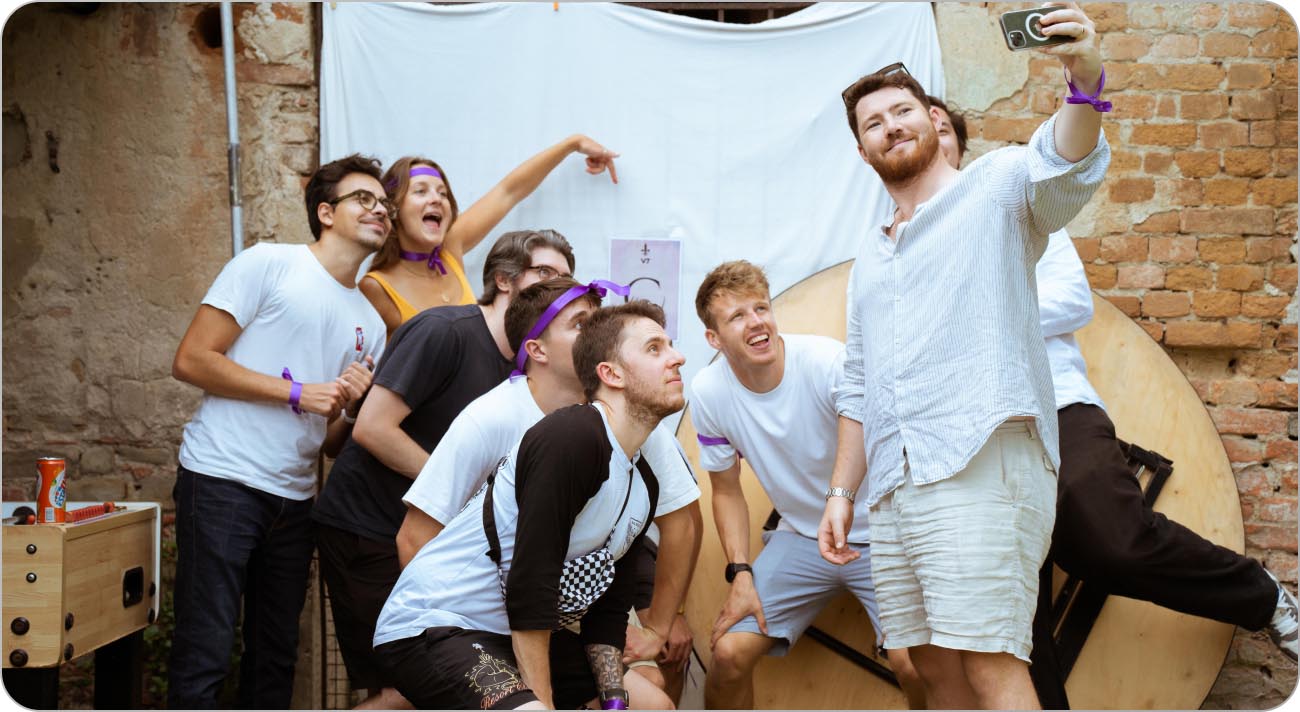
(They didn't win, but the real prize was the friends made along the way)
If you decide to set up a scavenger hunt of your own, you’ll want to think about how you separate your teams, the key sites that will best serve your people over the week (in other words, will it help them know where to go during a summit meeting?), and how you will communicate with teams during the hunt. In our case, we created slack channels divided into teams, where each cohort could share their point-winning selfies as confirmation in exchange for the next clue.
5. Set expectations: For booze and sleep
Your team will quickly become exhausted if they don’t make time for proper rest. While drinking will invariably happen, make sure you set expectations from the get-go: this is a workaway, not a holiday.
The same goes for sleep - while you want to encourage teams to engage in conversation, you also want them to pace themselves so they can maintain energy for a busy week. To provide a bit of balance, we scheduled dinner and entertainment that finished at a reasonable time - allowing team members to unwind, without letting loose.
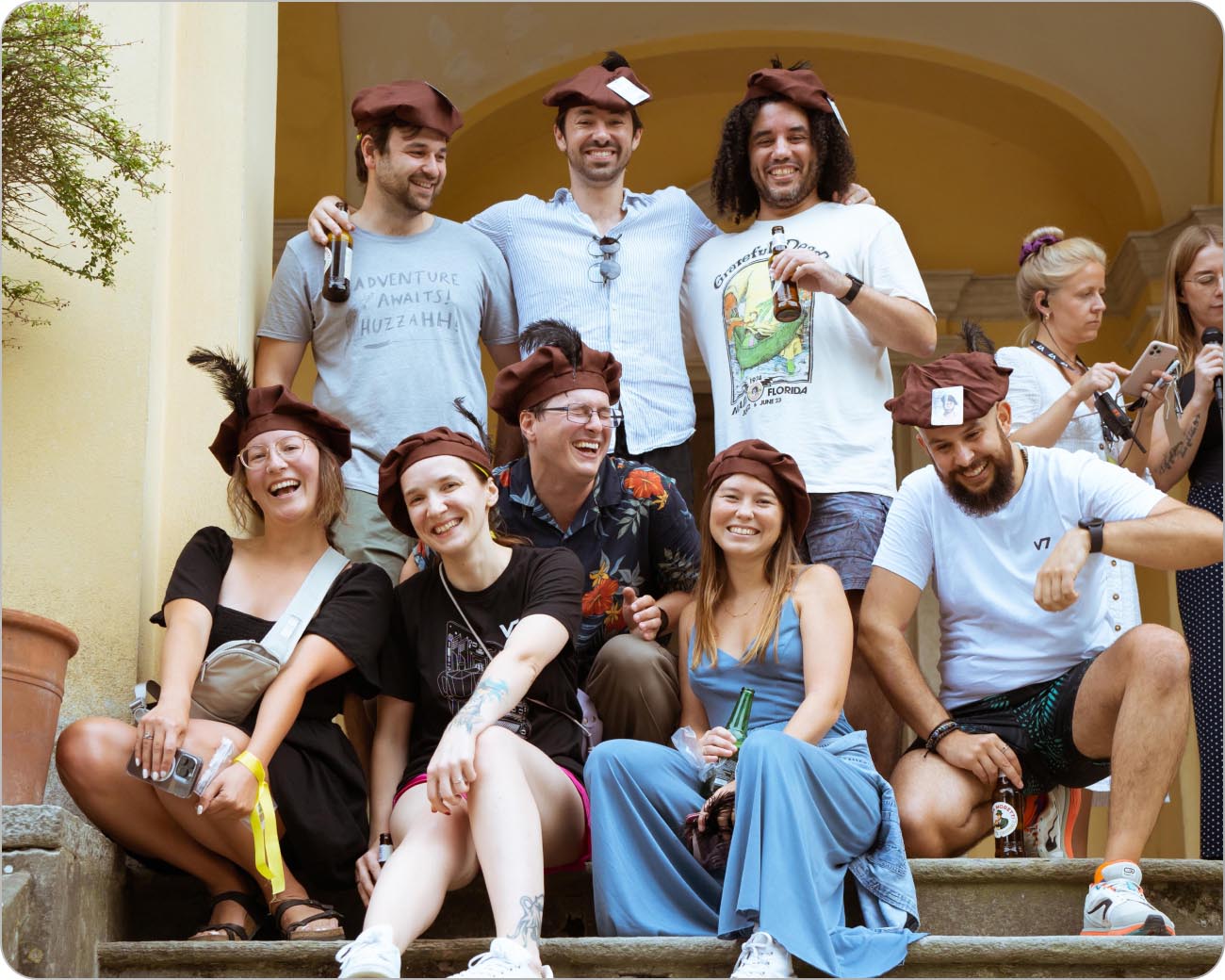
6. Host a company-wide presentation to get everyone on the same page for future goals
Summits are a time for hosting company-wide presentations that ensure everyone in the business is on the same page.
Open with a founder’s presentation on the company’s primary objectives, followed by team leads on their respective OKRs and how they align with the overall mission. We mixed in some audience participation and Q&A to keep the longer sessions engaging. In general, we don’t recommend keeping anyone as an audience for more than 90 minutes for workshops, or 45 if there’s no active participation.
On the second evening, we organized a founders’ fireside chat so anyone in the company could question leadership on strategic topics, aspirations, or what the future brings. This is a tradition that encourages transparency and accountability.
Work towards unity in the vision, and clarity on how to get there - and you’ll find planning for the next phase of the business far easier to grapple with.
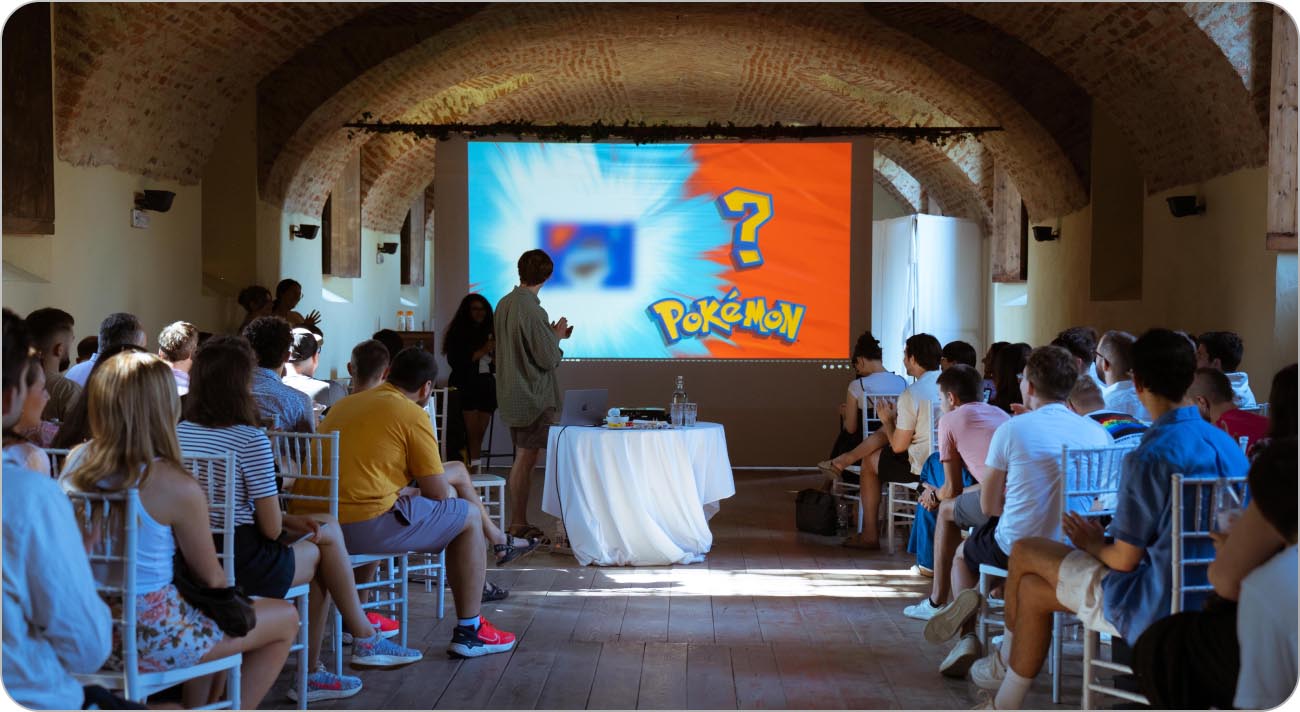
7. Encourage cross department team-lead workshops
One of the most immediate benefits of a company summit is the face-to-face contact your team can now enjoy with each other. When setting up our own summit, we built flexibility into the schedule to allow for cross-department team-led workshops. This spanned from detailed discussions between design and marketing, right through to our customer success managers engaging with our engineers to better understand how V7 customers benefit from our API.
Get creative with how you encourage your teams to break out of silos - and make sure they have the resources needed to easily meet. In our case, we scheduled blocks of time for cross-department discussions, and gave each team their own meeting space. These were fully equipped with strong internet, sockets, and where necessary, collaborative boards and sticky notes. Above all, make the process easy - so they can jump straight into solving the issue at hand.
8. Host a presentation from the founders to reveal innovations in the pipeline
As the founder of a startup, you’re strapped for time, which can make it particularly difficult to share the behind-the-scenes work of your leadership team with the remainder of your employees. A company summit is an excellent opportunity to do this, allowing you to speak to the entirety of your business within just a few minutes.
This year we focused on our product pipeline, predictions in the near-term future of AI's capabilities, and delivering a brief demo of experimental products. This will help your product and GTM teams align on higher-level goals so they can operate more independently.
9. Get people to work with their hands in a rocket-building competition
Collaboration doesn’t have to be confined to a desk - get creative with how you encourage your team to work together. We took advantage of the site available to us, which included a big open space overlooking rolling hills. Here, we set out a rocket-building competition, supplying participants with a few items:
A hastily built high-pressure bottle rocket launcher
A plastic bottle
Cardboard
Hot glue guns
Duct tape
Ribbons
Paint
From here - we gave teams a brief twenty minutes to cobble together a working rocket. While some failed to launch, others, as you can see, soared high.
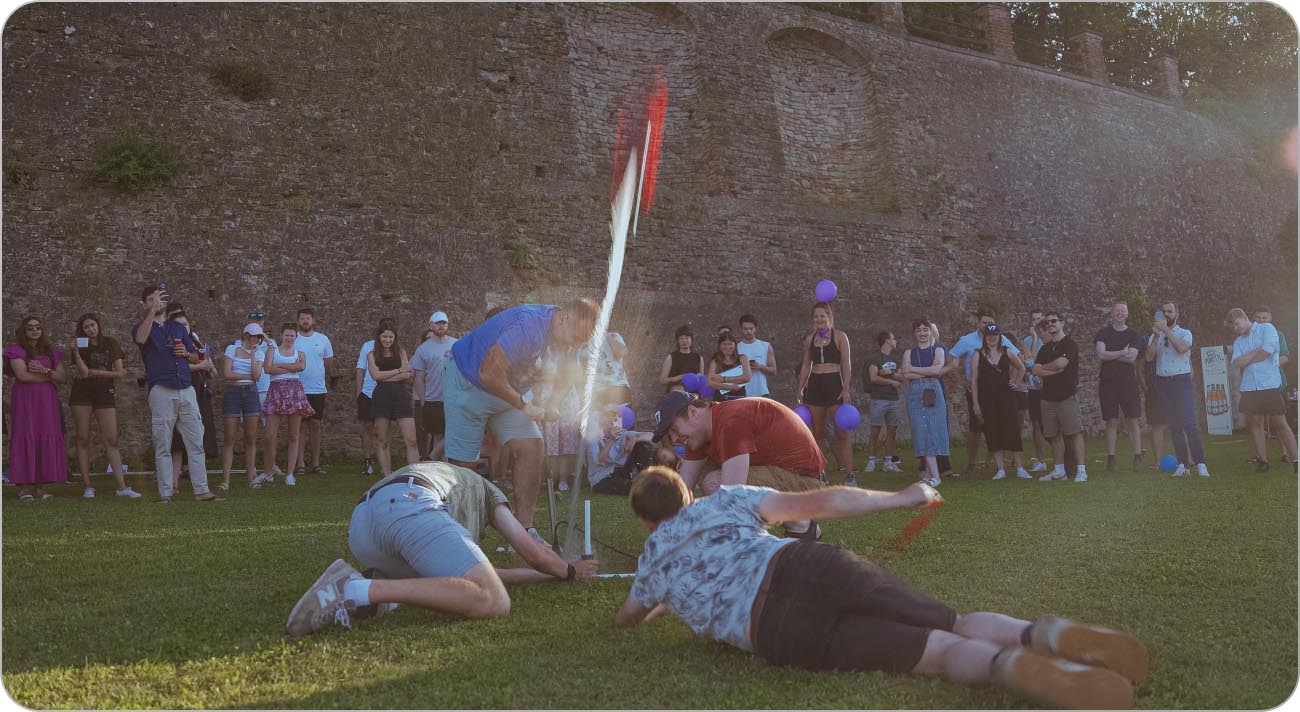
Startup talent is often inherently competitive and for software workers it's nice to occasionally work with your hands and be practical. This also helps people get comfortable with high pressure (no pun intended) in a safe environment, and celebrating wins (or commiserating losses) together.
Take the time to invest in a hands-on activity that gets your team moving - not only will it fuel team connection, but it will also serve as a lasting memory for your summit attendees.
10. Establish one gala evening to close the summit
As your summit comes to a close, your team will have had a week getting to know each other, debating priorities, and planning future projects. You want to end the summit with a memorable event that cements these newly forged relationships.
We hosted a Renaissance-themed gala evening to celebrate yet another resurgence of AI and to match the venue's look, with costumes, reception drinks, and a three-course meal. We encouraged people to bring a costume from home, which some people took very seriously, and subsidized a few. Tables were themed on core inventions of the Renaissance (from the printing press to the microscope) and people had one last chance to connect in person.
Not only does this serve as a memorable night but it closes your summit on a high.
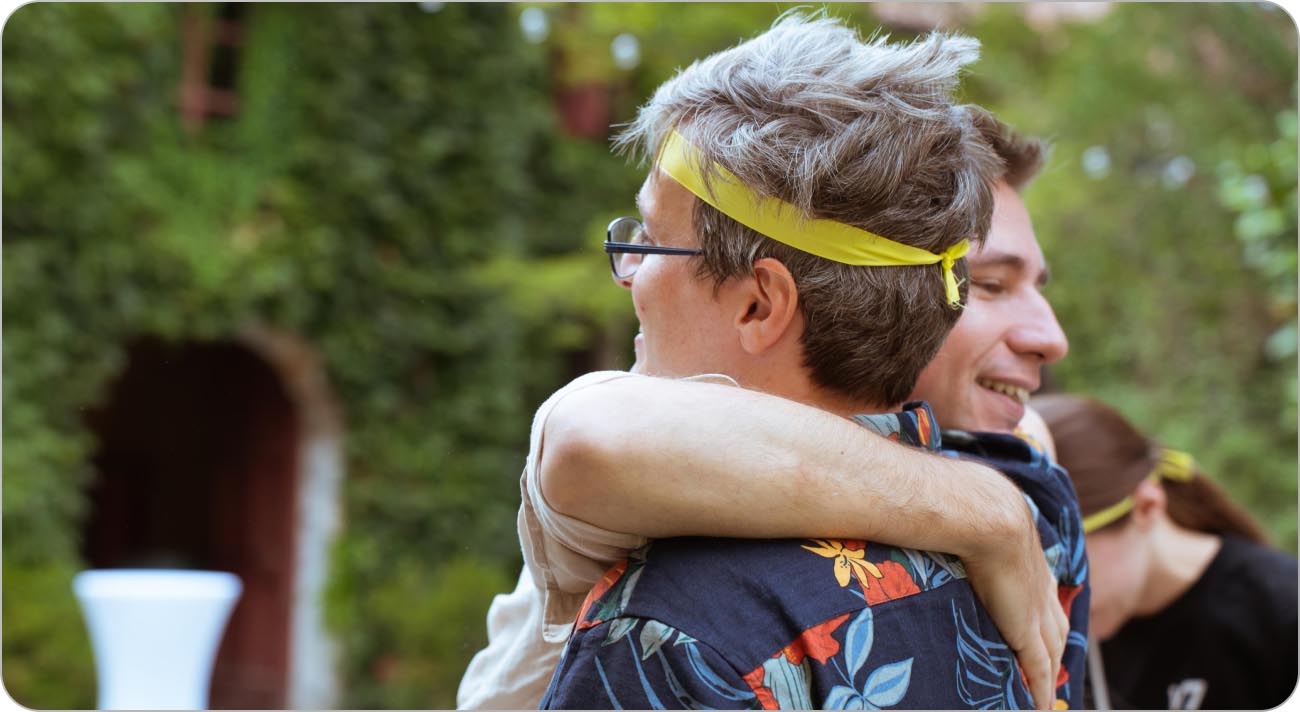
On closing day, your team will likely be exhausted from the social saturation, activities, and inevitably sub-par sleep. It's best to keep nothing on schedule for return-day and let people self organize any follow ups. Some will have a long way to travel home and a buildup of emails to take care of, so make sure airport transfers are facilitated as much as possible.
Grow your AI-first products with V7
When we’re not building plastic rockets, we’re powering the data engines of Siemens, MIT, and Boeing to help their AI products learn new things. Our team is 60% technical and covering all timezones. Get to know us by booking a demo of V7 Darwin today and invite your ML colleagues.
If you're mildly interested in startups summits, but obsessed with the quality of software products, consider joining V7.
